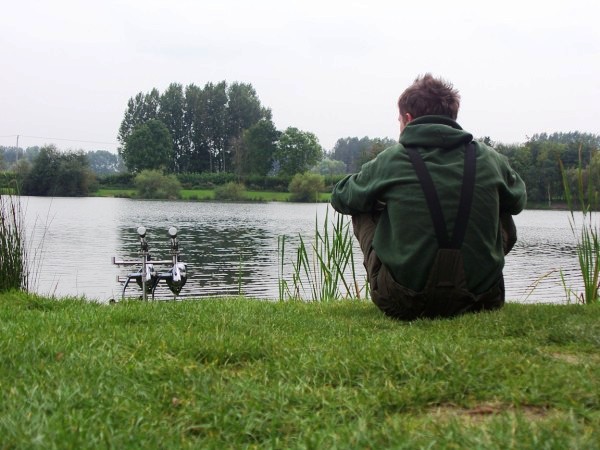
Tackling Pressured Day Ticket Venues
By Josh Bennett
Whether home or abroad, carp fishing is becoming more popular. This has a knock on effect with the amount of pressure that venues are seeing week in week out. After a fair few years of fishing this type of venue, there are a few tips and pointers that I believe go a long way into swaying the odds in one’s favour.
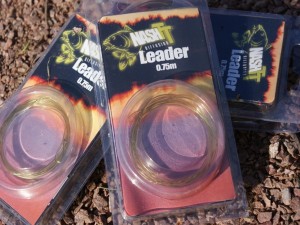
Nash diffusion camo leaders – second to none on versatility
Rigs
Throughout the year, fish see all types of rigs and presentation. Anglers of all abilities are pitching their wits against very cute carp. The amount of rigs and varied presentations they see every day of the week make any time of year very difficult in regards to outsmarting our quarry. In regard to rigs, I would suggest something you are confident in and not over complicating things. When I started fishing these types of venue, I thought I had to do something extra, something progressive. The fact is there isn’t a super rig out there and eventually I returned to using a simple coated braid; The Missing Link form Nash in 25lb. The only thing I do differently is shorten or lengthen the rig dependent on my baiting situation (i.e. shorter over a spodded mix of particles etc.). Rigs are not the be all and end all to catching a fish. The only thing you need to get right here is a sharp hook of your preference, I use the Fang Uni’s in size 6 over particles; a wide gaped hook with a viscous straight point and a Fang X in size 6 when fishing bottom baits or a Uni again in size 6 for pop ups over a spread baited area. Presenting the rig correctly is the most important for me, i.e. length, matching colour to lakebed as well as blobs of putty to ensure everything is pinned down.
Leads
The lead setup and mechanics are always a debate, but personally it depends on the situation of the lakebed. In weedy or snaggy conditions then a lead clip is a must for safety; the Nash Weed Safety Bolt Beads are perfect for this. On a clean bottom, then I would always prefer an inline lead. The hooking potential I find is far more effective than swivel type leads and is something that in my experience, many anglers don’t utilise. Inline leads can also be used inline drop off style and when placing hook baits from a boat or in the edge, this is a great tactic again on firm lakebeds if the lead is required to be discharged on the take. If you want more instant indication, a running rig is perfect. I prefer using this type of presentation in the colder months or when the fish are ultra finicky over a bed of particles for example. I utilise a ‘shokka’ style rig, made famous by the Korda boys and is illustrated below.
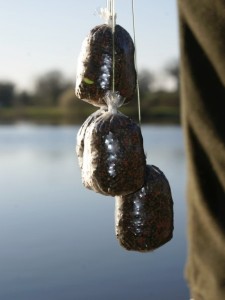
Solid bags off the edge of spots can produce big results!
Concealment of end tackle
Pinning everything down is not just for the last few inches and it leads me nicely onto the rest of the end tackle. On the majority of pressured venues, out of access areas such as no fishing banks, middle areas of the lake or snag areas almost always hold fish. Why is this? I put it down to lack of angler pressure and lines entering the water; safety. Concealing your approach will undoubtedly help you convince the fish into believing that your area is ‘safe’.
Concealment of your end tackle is of great importance at any time of year. If my line and end tackle are made to be out of the way to the best of my ability, then the carp are more likely to feed in the area I am in, compared to matey next door! My own preference is to use a fluorocarbon mainline to allow the mainline to sink away from the patrol routes of any carp possibly entering the swim and I ensure after casting I strip off plenty of slack to allow it to sink. The only time I won’t do this is in weedy conditions. The invisibility factor to fluorocarbon is all well and good, but I have to admit that on certain venues I have found that the amount of sediment in the water clings to the line and makes them quite visible. Regular recasting and cleaning the line with a wet cloth or towel when reeling in, combats this situation nicely.
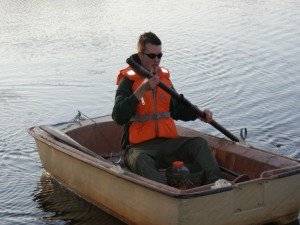
Placing baits by hand on the edge of spots is easy, but it can be achieved with precise marker work too
If the weed allows, I will also utilise back leads, often both flying and clip on styles together. I find the Nash TT flying Backleads in 15g are perfect. Being heavy, they don’t fly back too far and pin that all important last 6-20ft down onto the bottom dependent on how you use them. In some circumstances you want the backlead to fly further back and therefore I would use the lighter versions. I feel that the last few feet of your end tackle to the hook link is probably the most important part of concealment. My personal preference is the Nash Diffusion Camo Leaders. These have transformed my fishing, full stop! There unique make up allows the leaders to almost disappear over any lake bottom and this in turn allows for minimal disturbance to the lake. Whereas other leaders are matched to distinct lakebeds, such as weed, silt, gravel and clay etc. the Diffusion leaders allow me to cast over any lake bed and be confident of excellent presentation.
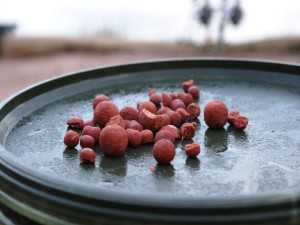
A range of sizes keeps the fish guessing
Bait
In my experience you cannot just throw any old bait out into the pond and expect a greedy carp to snaffle it! If I haven’t been applying my own bait into a water for the previous few months, then I would research thoroughly on your venue’s previous catch reports. There will always be a bait, flavour, size of bait, amount etc. that has been doing better than others. By investigating the bait further, I have previously been able to shape my ideas and eventual decision on what bait to use. Colour is also of benefit and a lake in particular that I can recall really responds well to white baits for some reason and I went on to land some lovely fish. If ever in doubt always choose a bait with a proven track record which you are confident in. Some prefer to use baits they have used and caught on in the past and this is certainly the path I would take, however others prefer to use the most recent bait, something new to the carp. I’ll leave that decision up to you.
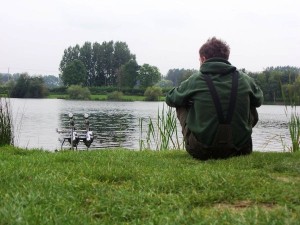
Continue to watch the water and the fish will show you where to cast
Location
None of the above would be relevant if your location is wrong. Location can sometimes be very difficult on these busy day tickets due to angler pressure, but even when you only have one peg to choose from, locating features in front of you can be the difference between catching and blanking. 90% of anglers I see on these venues still, STILL, chuck out the marker float first and try and find a gravel bar or hump. Even on week-long sessions, before I even think of looking at the marker float, I make sure that for the first few hours I chuck singles, zigs or bags out into likely looking areas to try and tempt any carp that are in the area. If I have caught fish on the initial
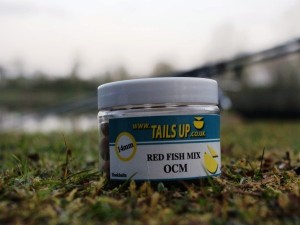
If you are unaware of the latest catch reports – use bait your confident in
single approach, I will leave the marker work for at least two or three hours after my last bite. I approach markering a swim very differently from most. Firstly, I will only attach a lead to my marker rod and begin to cast about the area in front of me. I will only use a marker if I am zig rigging to find the depth or if I need to bait up from a different angle than from my swim, i.e. from a non fishing area or the opposite bank. My personal preference is to find two spots, sometimes three and clip up using the line clip on the spool, measuring each on the bank using the 12 foot peg trick (see previous blogs from myself). The areas I am looking for include small gaps or channels in the weed, bars, humps or firmer silt areas. However, if I do find a bar, hump or larger area of silt then I will not fish on the middle of a spot. By observing the pressured fish in the margins, I have found that they are very wary of the middle of spots. They do feed on them, but regularly feed more confidently on the edges of these areas. As a result, I am trying to find where gravel turns to silt, down the sides of a bar or hump or falling just short or just beyond weed beds, instead of casting straight into the middle of a clearing. Taking time to do this, I have found brings better results.
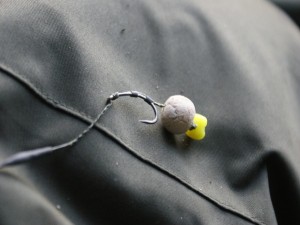
A fang X combined with the missing link for a bottom bait
Once a spot is located I will line it up with a far bank marker and reel in. I mark two pegs 12ft apart (a rod length), attaching the lead to one and paying line out and wrapping it around each peg until I hit the clip, counting each turn. If, for example, I counted out 12 and a half turns, there are 4 yards to 12ft so I would be fishing at 50 yards exactly. Marking this down on my piece of paper for future sessions, I would then reel the marker line in, clip up the rod to 12 and a half turns and cast out. By clipping the spod to this range too, I can bait up quickly and accurately without the need for a marker and constant recasting to gain my range. Once this is done, some marking tape or elastic placed by the butt ring when the line is still in the clip allows for each rod to be recast after a capture with ease. By writing the distance and far bank marker down, even if I turned up on a Friday night in the dark, I could still hit the same spot on my next session. On top of this, using pegs to mark the distance stops you having to walk rods yards down the bank away from your peg and leaving sticks poking out of the ground everywhere!
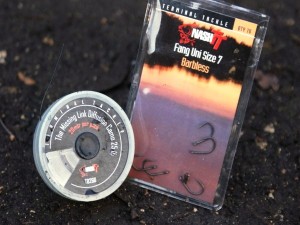
The missing link combined with the fang Uni for a particle, small bait or pop up approach
If I can only find one spot in a swim, I have no problems in placing all three rods very close together. I usually place two rods onto the spot and prefer to utilise the third as either a roaming rod or using it to place a single bait or bag just off a baited area. By doing this, it mimics a stray spod or left over piece of bait, which fish regularly come across and in my opinion, approach with less caution. This single approach varies from venue to venue but try both the high attract, bright natured approach as well as a less used tactic of using bait that looks like it’s been there a while, i.e. washed out baits or pale coloured hook baits. By again observing fish feeding in the margins, the larger fish will regularly hang off baited areas, preferring to pick up scraps when any danger has been nullified by greedier, smaller carp. In fact, this is exactly how I caught my first UK and French 40lb+ fish, a single bag placed a rod length or two off a baited area, give it a go.
These tips will work at any time of year and I wish you the best of luck in your fishing.
Josh Bennett

Comments